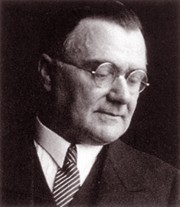
“[…] for the 7th edition of his ‘Treatise on diagnostic methods of examination’. This work, which deals with the clinical methods of diagnosing and treating illnesses, is of major scientific and practical significance. It is invaluable to students, medical practitioners and university lecturers as it presents Professor Sahli’s own extensive and highly important research as well as the latest findings in internal medicine and is therefore generally considered unrivalled by experts in the field.”
Die Gutachter attestierten A.s Werk bahnbrechende Wirkung nicht nur für die Forschung des besprochenen Raums, sondern für die Geologie überhaupt. Mit imponierender Konsequenz habe A. die Theorien der Kontinentaldeformation (E. Suess) und der Kontinentalverschiebung (A. Wegener) ausgebaut und zu einer umfassenden Theorie der Erdgeschichte synthetisiert. Damit sei die tektonische Geologie recht eigentlich in eine neue Aera überführt worden (Mobilismus). Sachlich und der Entstehung nach ist A.s Karte integraler Bestandteil des Textbandes. Mit einer Kombination stratigraphischer und tektonischer Methoden habe A. eine einzigartige Umsetzung seines nicht leicht verständlichen Buches erreicht.

